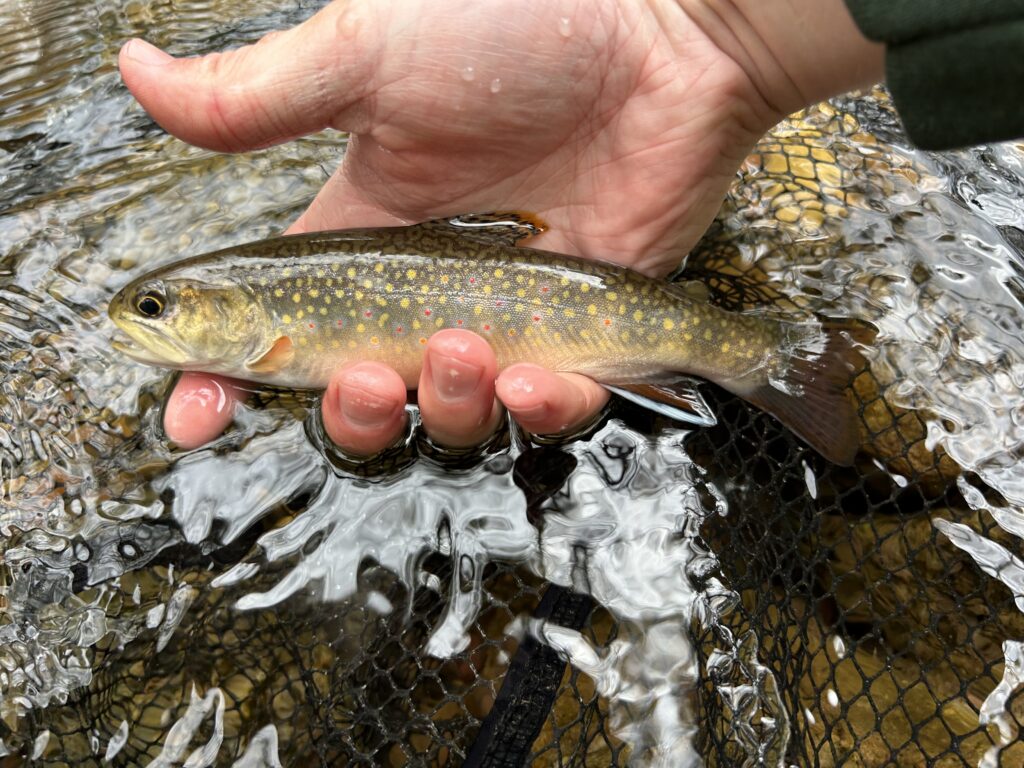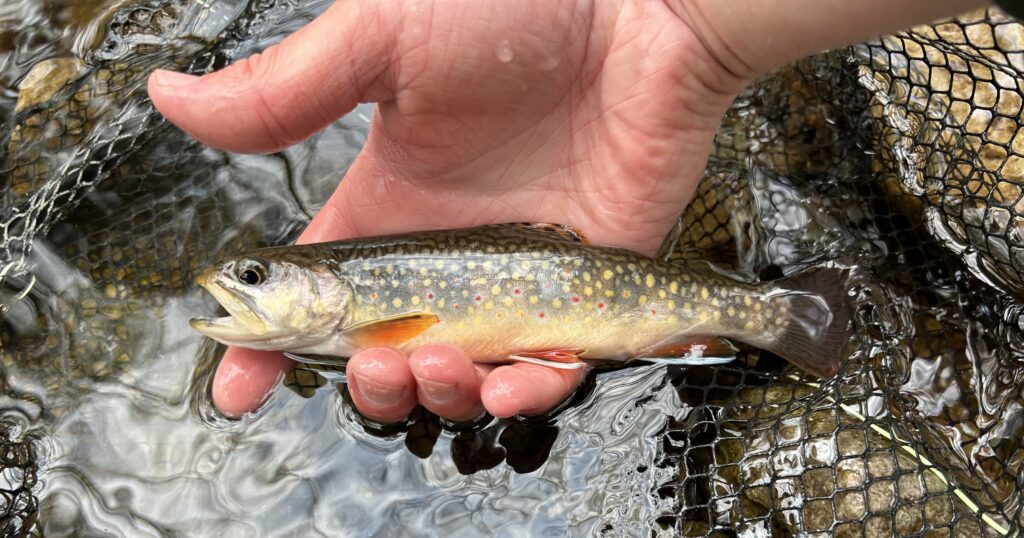I reached the trailhead and took a moment to watch the creek in front of me. I followed it up over a series of miniature cascades and fixated on the highest point I could see, where it emerged from a wall of green and began its final fall down the hillside. Far above the visible stream, deep cuts in the mountain gave away the water’s million year old trail to its confluence. I had some ground to cover.
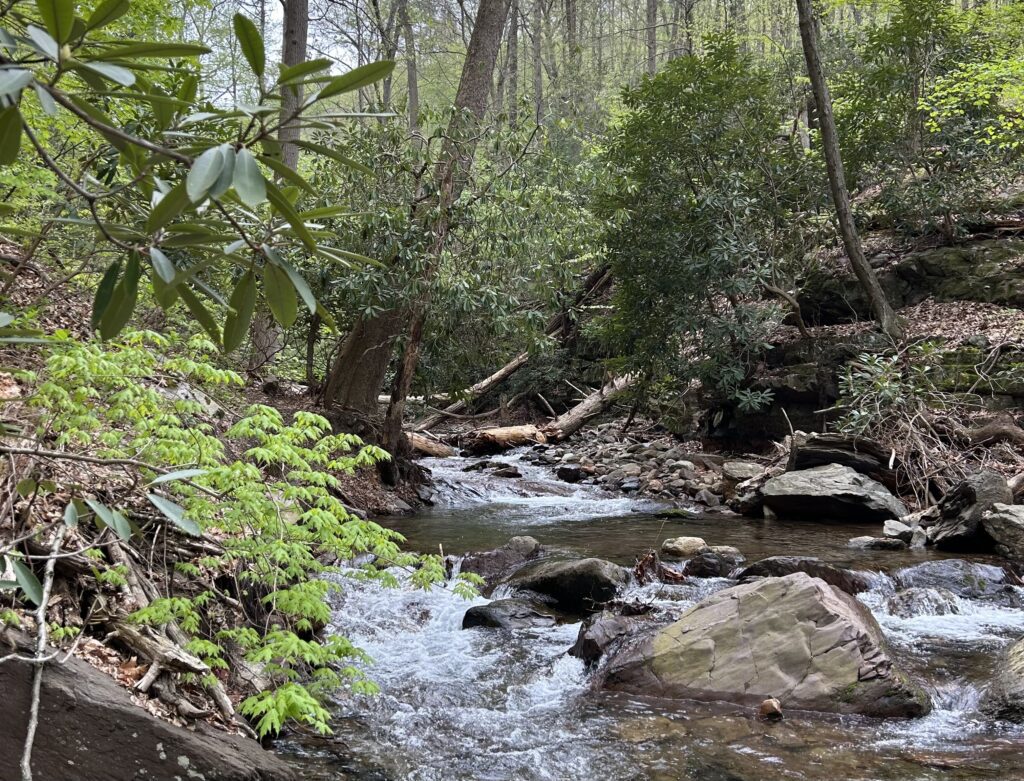

I had waited almost two years for this day, although that may make my cause sound more desperate than it was. Fishing in Central Oregon wasn’t exactly a chore, and the high desert waters filled with redband, bull trout, and cutthroat could’ve kept me satisfied for a lifetime. But when it was time to come back East, the chance to catch my local creeks’ native fish made the long drive a little easier.
I like to think of each start on the river as a question. They’re not always complicated, but they kick start my mind into working on an answer and finding a few fish. Success in this sport is determined from feedback, and if you ask a lot of questions and compartmentalize your answers into a pattern, a tide, a front, or even just knowing if you can thread a back cast between those trees (the answer is always no), you’ll be a little closer to being on to something for this time or the next.
For my trip to this new stream, my first question was pretty straightforward: where were the native brookies I had missed for the last couple of years? A bored research binge a while back had uncovered this spot and I was just getting around to fishing it now. Three weight in hand, I slid into the hemlock canyon and started working my way upstream.
Summertime creek fishing is a vibe, for lack of a better word. For me, I’ve found that it encapsulates a little bit of everything that’s objectively fly fishing for trout and simplifies it. Fish aren’t picky, small water is easy to read, dry fly eats are common, and you often have to get a little further into nature (at least in the East) to find small creeks that are suitable for wild trout. In a fly fishing world saturated with euro rigs, quadruple articulated streamers, and thousand dollar rods, it’s sometimes nice to tune out the noise that comes with bigger rivers and get to work.
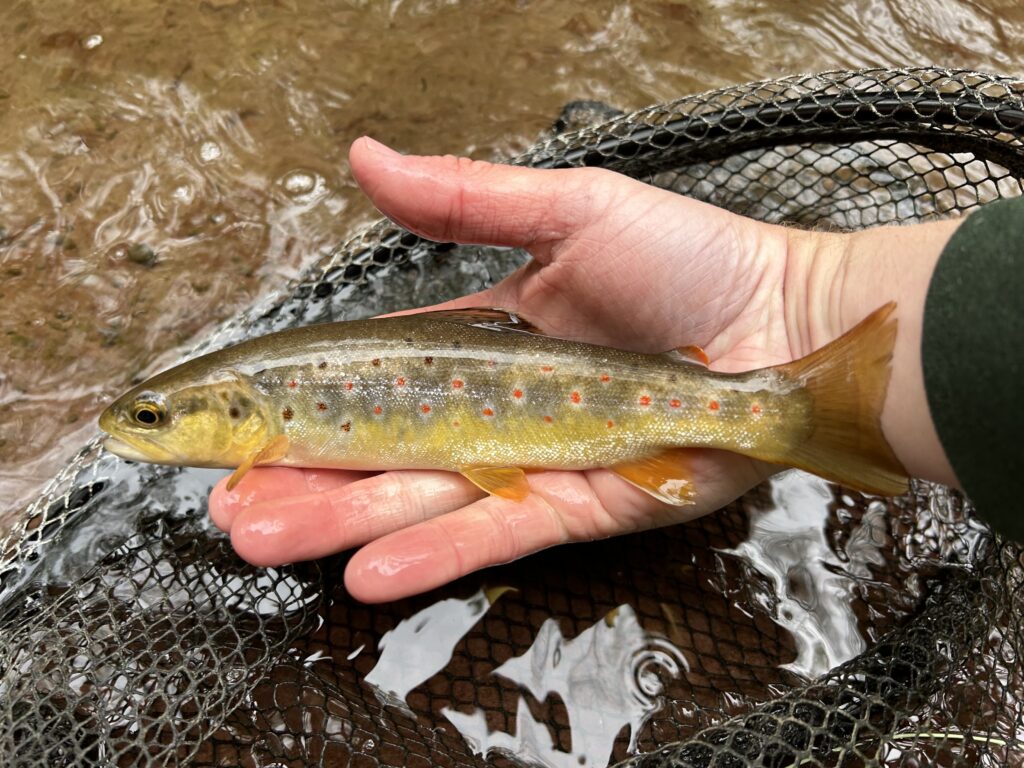

I hooked the first fish of the day in a deep plunge pool and caught a flash of bronze as it flipped into my net. I wasn’t after brown trout, but it was a start. Brook trout in my area were forced into the highest reaches of their range a century ago, allowing non native species to outcompete and thrive. I fished more brookie-type water in between the pools hoping to find a char in the mix, but found only more browns as I worked upstream. I moved faster now, looking for a natural barrier or groundwater system that could indicate a change in fish composition.
For some anglers, fishing efforts have become a thing to flaunt. When it’s not how many fish you catch or how big they are, it’s the hours you were out for, how late you stayed up, or the miles that you hiked, as if you need to be having the worst time of your life to enjoy this sport. In my experience, the harder you think about a preconceived grind, the less you learn. Experience results in time spent on the water, not the other way around.
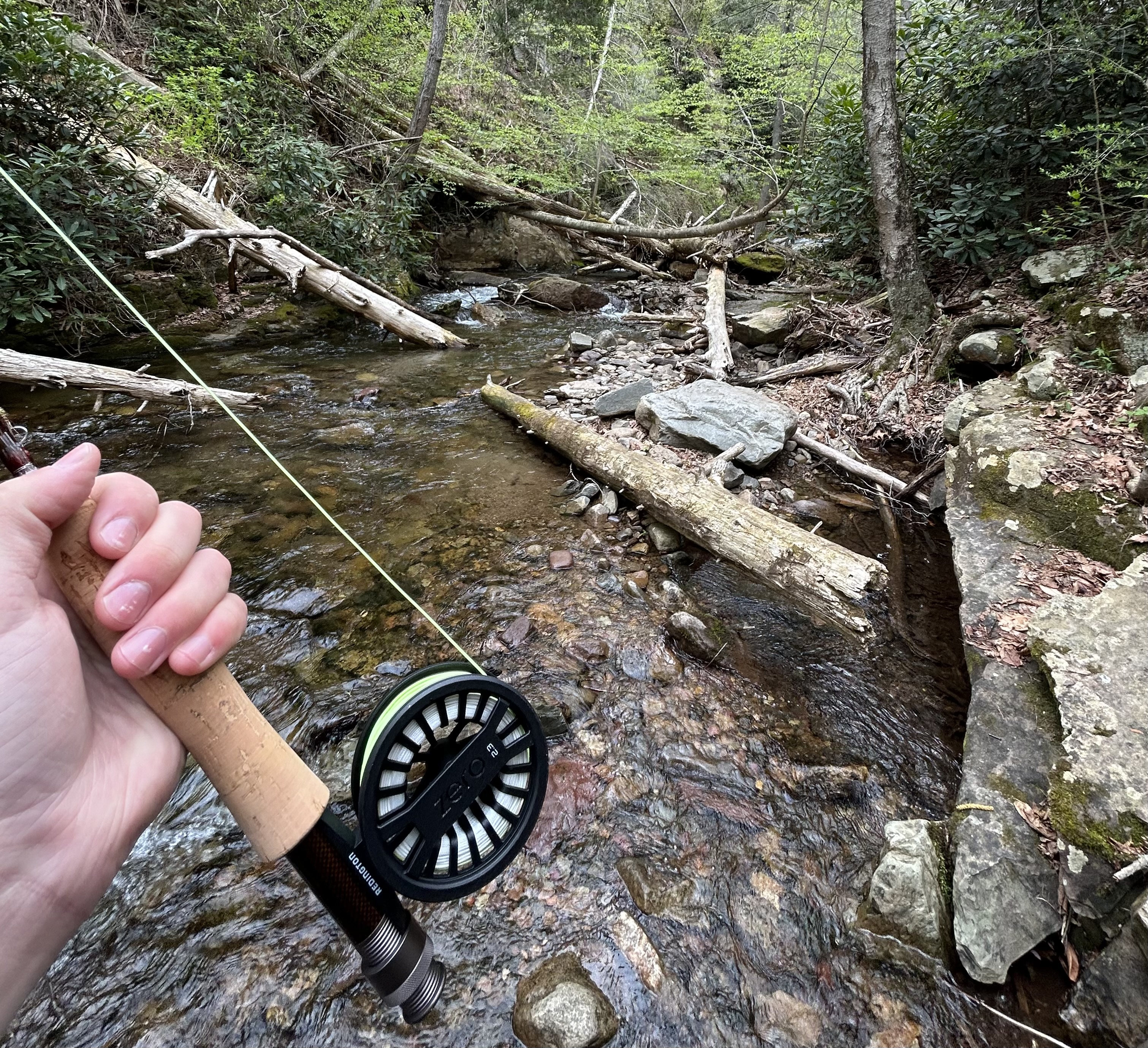

And for how easy small stream fishing can be, it certainly can keep you out for a while. New water means every hidden bend could have something worth seeing, and your unquenched curiosity can take you higher up into these systems than you often mean to go. On this particular day, my fruitless quest for brook trout had brought me deep into the afternoon, although it was hard to tell. The steep grade of the mountain and the screen of the hemlocks shaded my surroundings, and kept light on the forest floor low and constant. I felt I could’ve been out for 45 minutes or five hours. My unanswered questions easily pulled me against the current and on to the next section of water.
After a strangely long fishless stretch of water, my dry that had mostly been serving as an indicator all day was annihilated just off a root choked bank. The fly came out as I landed the fish, leaving a blur of yellow vermiculation and blue haloes swimming circles in my net. The brook trout darted from my hand and I glanced upstream at the countless other spots of potential holding water, imagining what other undercut banks and pools still held char through the eons up here, and knowing there was only one way to find out. I had some ground to cover.
